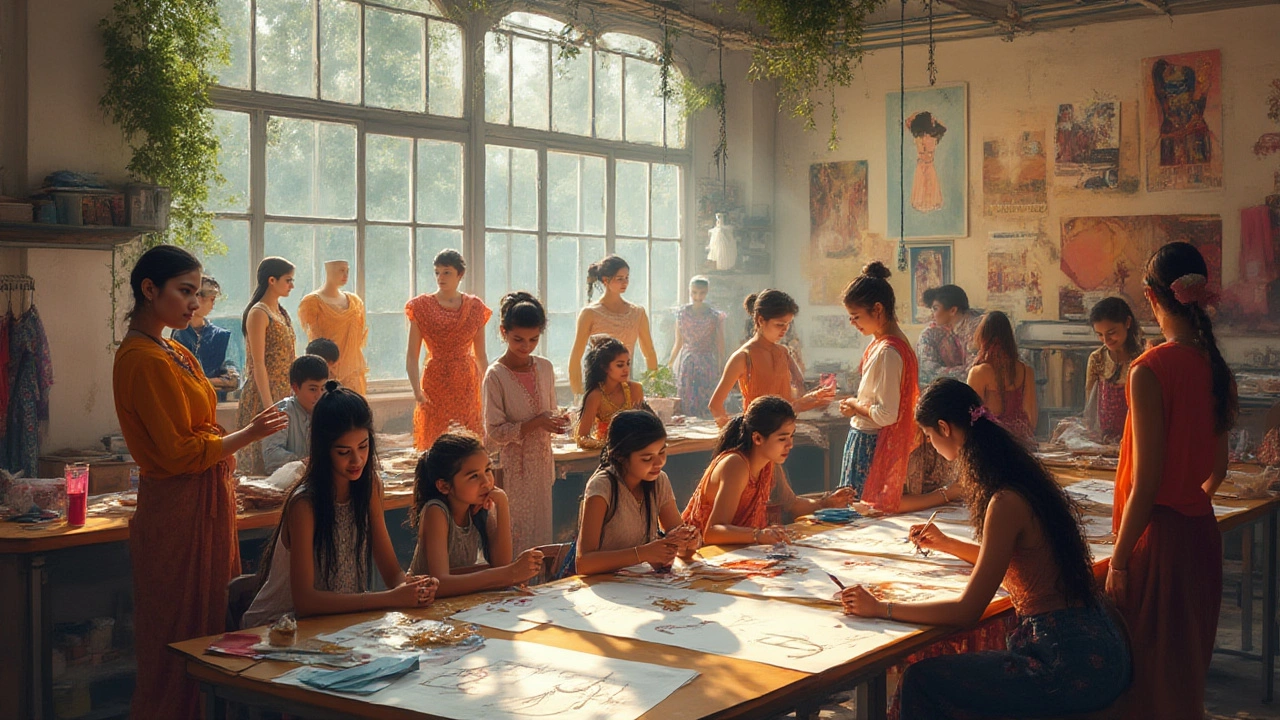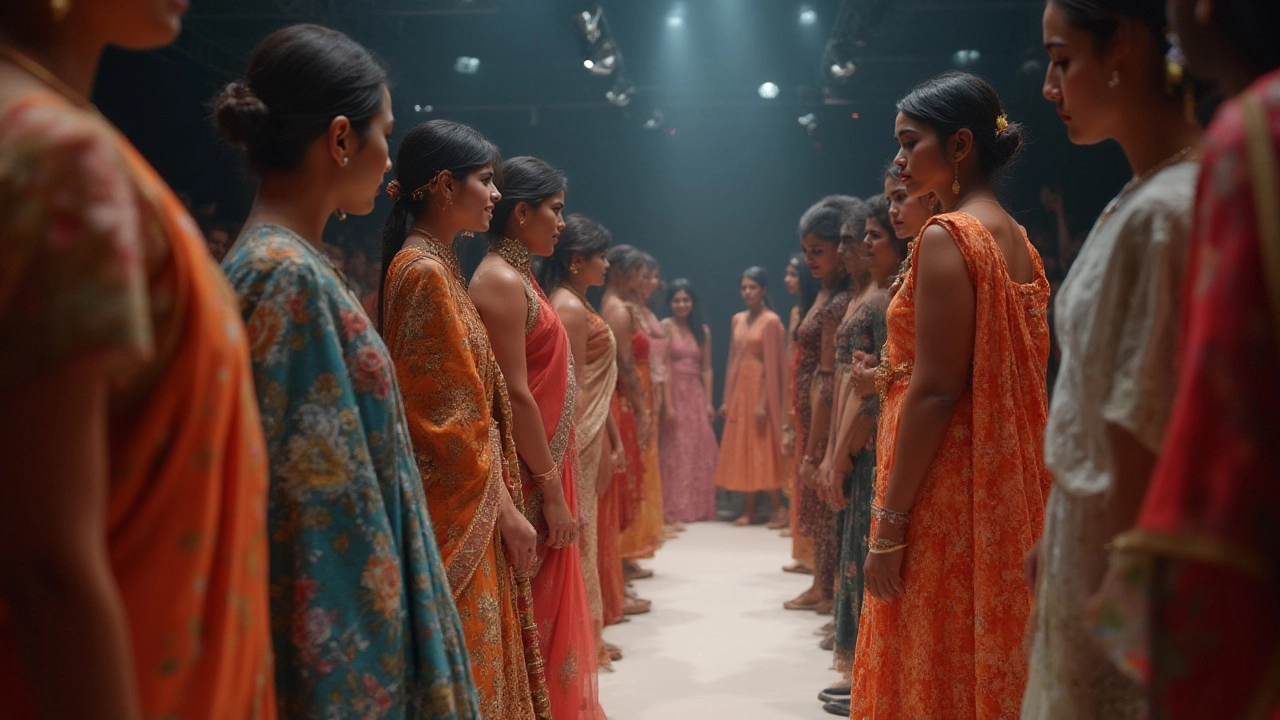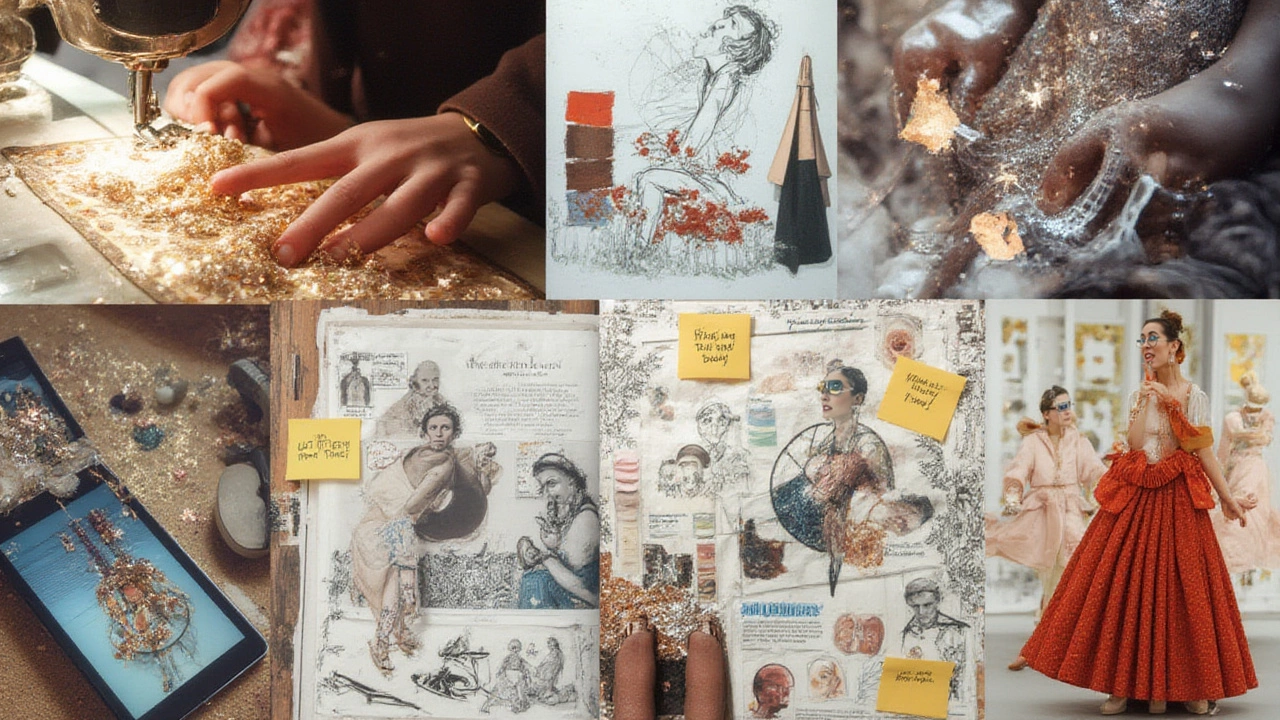
Forget everything you think you know about fashion design. The industry isn't just about sketching pretty dresses or memorizing the color wheel. The rise of AI, sustainable materials, and global markets is forcing fashion to reinvent itself fast. Right now, top fashion houses are hiring people who can blend design with tech-savvy skills, business acumen, and social media influence. So if you’re wondering which course is best for fashion design, you’re not just picking a class — you’re mapping out your journey into a world that rewards creativity and innovation in ways you probably never imagined.
Types of Fashion Design Courses: An Unexpected Variety
When most people picture a fashion course, they think of a classic Bachelor of Design (B.Des) with students hunched over drawing tables and rolls of muslin. But the reality’s wilder. There's a dizzying array of programs: diplomas, short-term certificates, online courses, specialized postgraduate degrees, and even bootcamps for digital fashion design.
Let’s break it down:
- Bachelor Programs: These last 3-4 years and cover everything from pattern making to historical costume studies. Popular in places like NIFT (India), FIT (New York), and Central Saint Martins (London).
- Diplomas & Advance Diplomas: Often shorter, these focus tightly on practical skills—think garment construction, draping, or fashion merchandising.
- Master’s Degrees: For deep-divers and career switchers. You’ll find degrees in specialized subjects like sustainable fashion, luxury branding, or fashion technology.
- Online Courses: If you want flexibility, platforms like Coursera, Udemy, and MasterClass let you learn at your own pace. These range from beginner “how to sew” classes to advanced digital fashion modeling using CLO or Marvelous Designer.
- Summer Schools & Workshops: Intensive, hands-on experiences, often with industry pros. Good for portfolio-building and making real connections.
The trick? Choose based on your end goal. Want to become a high-fashion designer? Stick with a full-fledged degree from an established school. Hoping to launch your own label or work as a stylist? A combined mix of short-term courses, internships, and digital marketing skills packs a stronger punch than you’d expect.
Here’s a table showing some of the top programs and what they’re known for:
| Institution | Program | Unique Strength |
|---|---|---|
| Central Saint Martins (UK) | Bachelor of Arts in Fashion | Global industry links, high-profile alumni like Alexander McQueen |
| NIFT (India) | B.Des in Fashion Design | Strong industry tie-ups, national credibility |
| Parsons School of Design (USA) | BFA in Fashion Design | Focus on innovation, hands-on collaborations |
| Polimoda (Italy) | Master in Fashion Design | Luxury market focus, Italian craftsmanship |
| Udemy / Coursera | Various Online Courses | Affordable, flexible, good for quick upskilling |
Digging Deeper: Core Subjects and Hidden Curriculum
Every course says it’ll teach you "design basics" or "fashion illustration." But what do you actually get? Under the hood, the best fashion design programs are all about translating crazy ideas into wearable, sellable garments.
Here’s what the core usually includes:
- Drawing, sketching, and concept visualization
- Textile science and material innovation
- Pattern making and draping (so many late nights sewing for real... trust me)
- Computer-aided design (CAD), 3D modeling, and now, digital avatar creation
- Fashion history — because you really don’t want to re-invent the mini skirt, again
- Production, quality control, and managing supply chains (this gets technical fast)
- Business, marketing, and entrepreneurship skills — the secret sauce for getting paid in this game
Surprise: Today, most courses squeeze in at least a module or two on sustainability, AI in fashion, or digital portfolios. Tech is coming in hot — look for schools experimenting with VR/AR or courses that partner with 3D printing labs. These extras set you apart when you’re interviewing with big names or even starting your own fashion-tech business.
fashion design courses are also about networking. Many colleges run ongoing workshops, invite visiting designers, and send students off for internships at real brands. When my wife Nalini did her textile design course, half her career came from connections she made during internships in Delhi. That’s why the "hidden curriculum" — things like crit sessions, student-run fashion shows, and guest lectures — ends up driving your career just as much as what you learned in a classroom.
If you’re considering a remote or online course, make sure they offer portfolio reviews, live critiques, or mentorship. The best online fashion schools now run virtual fashion shows and collaborative projects across continents. It’s wild, but it bridges the gap between learning and the real pace of the industry.

Best Fashion Design Courses in India Versus Abroad: The Real Difference
Everyone loves debating which is better — studying fashion in India or heading overseas. Let’s be real: Both have strengths, and the cost gap is massive. As of 2025, a top Indian B.Des might set you back ₹4-8 lakhs a year, compared to $25,000 and upward for a big-name American or European school. But that doesn’t always mean "more expensive equals better."
In India, NIFT is still the top name. Pearl Academy, NID, and Srishti also stand out for design, but with slightly different vibes — for example, Srishti leans more towards experimental and interdisciplinary work. Courses in India tend to focus on process, technical skill, and a deep dive into Indian and eastern textiles (Banarasi, Chanderi, Ikat — stuff global brands now drool over).
Abroad, you’re getting access to a larger, often more diverse industry. Schools like Central Saint Martins or Parsons focus heavily on pushing creativity and running all-out collaborative projects — sometimes, their graduation shows get more press than actual New York Fashion Week runways. You’re up against tougher competition, but the exposure is huge. Plus, some programs now offer unique minors in sustainable design or fashion tech that you just can’t find in Asia yet.
Here’s a quick comparison table to make it less confusing:
| Country | Top Courses | Industry Connections | Main Benefits |
|---|---|---|---|
| India | NIFT, NID, Srishti, Pearl Academy | Strong with Indian brands, festivals, textiles | Affordable, unique focus on Indian crafts |
| UK/USA | Central Saint Martins, Parsons, FIT | Access to global fashion scene, luxury brands | Greater prestige, international networking |
| Italy/France | Polimoda, ESMOD, Istituto Marangoni | Links to luxury fashion houses | Mastery of couture & luxury craftsmanship |
So what’s the best fit? If you want to launch a career in Indian fashion, start with an Indian school and stack up internships. If you’re dreaming of Paris runways or NYC startup brands, studying abroad is a better launchpad — just prep your wallet for the ride. Be sure to check scholarship options; major schools abroad often set aside money for talented students from developing countries.
Career Prospects and How the Right Course Shapes Them
Fashion design isn’t just about one job. Depending on what you study, you could be doing anything from designing red carpet gowns to running digital avatars for gaming companies. Fashion designers, merchandisers, stylists, fashion journalists, retail managers, brand strategists, graphic or textile designers — the job tree just keeps growing.
Here’s where course choice kicks in:
- Bachelor’s and Master's degrees give you the shot at entry-level designer roles, product development, or junior merchandiser gigs.
- Short-term diplomas or upskilling courses are great for roles in styling, digital marketing, or technical support for design brands literally hiring anyone who can "do everything."
- Specialized courses in AI, 3D modeling, or sustainable fashion are a goldmine for future start-ups and big brands looking for the next innovation.
Companies like H&M, Zara, Nike, and even Indian brands like Fabindia aren’t just looking for designers anymore. They want creative thinkers who can handle business tasks, crunch sustainability numbers, or even run their online stores. A 2024 LinkedIn study showed job postings for "fashion tech specialists" jumped by 58% in a single year. The lines between designer, influencer, business manager, and tech expert are blurring. Don’t be surprised if you land a job designing virtual handbags for gaming avatars, or get paid to plan eco-friendly supply chains for a global brand.
What employers look for isn’t just where you studied, but what you did there. If you make the most of internships, portfolio projects, and industry workshops, your odds of landing a killer job shoot up. Get feedback on your work, put your portfolio out there constantly, and keep networking even after the course ends.

Choosing the Right Course: Top Tips and Common Mistakes to Dodge
Picking the best course for fashion design comes down to asking yourself some brutally honest questions. Where do you see yourself working? Can you handle the expense of going abroad? Are you more about high-stakes creativity, or do you thrill over problem-solving the next generation of wearable tech?
Here’s what makes a difference when choosing:
- Accreditation & Reputation: Top courses are recognized by industry bodies — in India, look for ones with solid NAAC or NIFT recognition. Globally, check for rankings and alumni success stories.
- Curriculum Depth: Scan the syllabus. The best programs change often and include new tech and business courses every year.
- Faculty & Industry Linkages: Are practicing designers, brand managers, or innovators on campus or teaching online modules?
- Opportunities for Internships & Competitions: The more, the better. Real-world exposure sets you up far better than textbook learning.
- Portfolio Development: Does the course give you the chance to build and present a killer portfolio? This is your ticket to every major job or client.
- Alumni Network: Strong alumni help with jobs, mentorship, and just keeping up with industry trends — the secret weapon for every top school.
And here are mistakes I’ve seen friends (and yes, even my own wife, Nalini!) make:
- Picking a school purely for "big names" or fancy locations, then getting stuck in outdated courses.
- Ignoring internship or collaboration opportunities — you want to graduate with REAL projects in your portfolio.
- Not checking faculty expertise — you need mentors who know today’s industry, not just traditional tailoring.
- Skipping business and entrepreneurial modules — because at the end of the day, you’re often your own boss.
The world of fashion design keeps morphing at lightspeed. The risk of putting all your hopes on just one school or single path? It’s real. My best advice: mix and match. Stack a degree with online courses in areas like digital design, marketing, or sustainability. Go for as many internships and contests as you can. Stay curious, because this industry rewards the hustlers and the experimenters.
If you’re still unsure, contact alumni. Most are happy to answer questions — nothing beats a brutally honest take from someone who’s lived it. And if you’re ever on the fence between two choices, pick the one that scares you a little. That’s usually where the magic happens in fashion.
